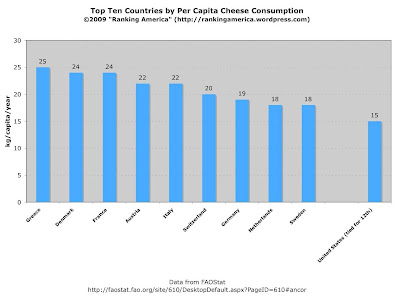Let's review the underlying data that influences the pricing.
Protein pricing is calculated from this equation.
Protein Price = ((Cheese price – 0.2003) x 1.383) + ((((Cheese price – 0.2003) x 1.572) – Butterfat price x 0.9) x 1.17)
This can be simplified as follows:
Protein Price = 3.22 x Cheese Price - 1.28 x Butter Price - $.43
Similarly, Butterfat pricing is calculated from this equation.
Butterfat Price = (Butter price – 0.1715) x 1.211
This can be simplified as follows:
Butterfat Price = 1.21 x Butter price – $0.21
The actual calculation uses the National Agricultural Statistical Services (NASS) cheese and butter prices which lag the Chicago Mercantile Exchange (CME) prices by about two weeks (April 2 post to this blog). However, we'll look at the CME prices as they are made available on a timelier basis.
First, butter prices

Butter prices are clearly up, so we can expect an improvement in butterfat pricing.
Where are cheese and protein prices going?

Cheese prices have taken a downward tumble. With Cheese prices down and butter prices up, we can expect protein to be down for April.
For Class III milk pricing the simplified formula (April 7 post) is as follows:
Class III Milk Price = 9.6 x Cheese Price + 5.9 x Dry Whey Price + 0.4 x Butter Price - $3.20
Cheese prices are down and dominate the Class III formulas, so there is no doubt that Class III will be down for April. Not good news.
Monday's post will review the actual Class III prices that will be announced on Friday and their impact on the long term trends.
What does the USDA forecast for 2009? Even posting it is painful!


















 The butter price has almost no impact. When the price of butter goes up, the value of butterfat goes up, but the value of protein goes down! They are almost equally offsetting. The impact on Class III milk price is insignificant.
The butter price has almost no impact. When the price of butter goes up, the value of butterfat goes up, but the value of protein goes down! They are almost equally offsetting. The impact on Class III milk price is insignificant.
 However, when the price of cheese goes up, the milk check gets really interesting!
However, when the price of cheese goes up, the milk check gets really interesting!


